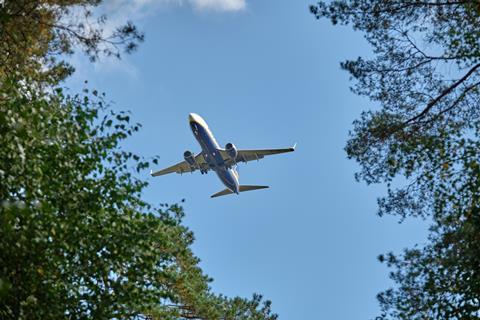A market-ready, zero-emission aircraft by 2035, carbon-neutral scheduled collective transport for journeys under 500km by 2030, and possible quotas on low-carbon fuels are among the goals set by the European Commission in its Sustainable and Smart Mobility Strategy.
The strategy, which was published on 9 December, is aimed at delivering a 90% reduction in emissions from the European Union’s transport sector by 2050.

“To reach our climate targets, emissions from the transport sector must get on a clear downward trend,” states Frans Timmermans, executive vice-president for the European Green Deal. “We’ve set ambitious targets for the entire transport system to ensure a sustainable, smart, and resilient return from the Covid-19 crisis.”
Targets outlined in the document that relate to aviation include a “zero-emission large aircraft” that “will become ready for market” by 2035. The goal for 2030 is that “scheduled collective travel of under 500km should be carbon neutral within the EU”. By 2050, the Commission wants to see a multimodal Trans-European Transport Network (TEN-T) that is “equipped for sustainable and smart transport with high-speed connectivity” across the bloc.
The strategy states that “all policy levers must be pulled” to “significantly reduce the current dependence on fossil fuels”. This will involve taking “decisive action to shift more activity towards more sustainable transport modes”, including increasing the number of passengers travelling by rail, and “shifting a substantial amount of freight onto rail, inland waterways, and short sea shipping”.
The Commission says that “all transport modes are indispensable”, therefore “we must boost the uptake of low- and zero-emission vehicles as well as renewable and low-carbon fuels for road, waterborne, air and rail transport, without further delay”.
Air and waterborne transport have “greater decarbonisation challenges” than other modes of transport and, as such, “must have priority access to additional renewable and low-carbon liquid and gaseous fuels”, according to the strategy.
“Fuel suppliers and operators should now have a clear signal that transport fuels must become carbon neutral, and that sustainable renewable and low-carbon fuels must be deployed on a large scale without delay,” says the Commission, adding that it “will consider additional measures to support these fuels, possibly through minimum share or quotas through the revision of the recast Renewable Energy Directive”.
The EU will continue working closely with ICAO on “concrete measures aimed at reaching science-based global emission reduction goals consistent with the Paris Agreement”, says the Commission. Implementing the Single European Sky will be another facet of a “basket of measures needed to decarbonise aviation”.
Aviation representatives have broadly welcomed the Commission’s strategy, but have called for more detail. In a joint statement, the heads of Airlines for Europe, ACI Europe, the European Regions Airline Association, the Civil Air Navigation Services Organisation, and the Aerospace and Defence Industries Association of Europe say that it is “aligned with and reinforces the sector’s existing commitments towards a sustainable post-crisis future for aviation – and sets the stage for concrete decarbonisation proposals which will be unveiled next month”.
In November, the European aviation sector submitted a report to the Commission, in which it committed to work with policymakers to reach net zero carbon-dioxide emissions by 2050.
“The aviation industry now looks toward our own Great Business Reset as we recover from the disastrous impact of the pandemic. This is an opportunity for sustainable growth and resilience. But the devil is in the detail, and we need all stakeholders – including the Commission – to actively embrace and drive our proposed EU Pact forward,” says the joint statement.
“Early in the New Year we’ll unveil our own ambitious plan to reach Net Zero CO2 emissions by 2050, and we are counting on collaborative discussions with the institutions as we take this decisive plan forwards.”


























